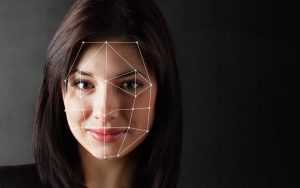 In the last article, we discussed the importance of knowing who your sim registration (KYC) agents are. We demonstrated the importance of having biometric identities for your agents and a full register of all their sim and device serial numbers. In this article, we discuss the importance of gathering quality data upfront.
In the last article, we discussed the importance of knowing who your sim registration (KYC) agents are. We demonstrated the importance of having biometric identities for your agents and a full register of all their sim and device serial numbers. In this article, we discuss the importance of gathering quality data upfront.
Your SIM Customer Data is a precious asset to your business. You need to pay attention to the integrity and quality of the data you collect. This data becomes a rich source of information and an enabler to your business for marketing, financial services and others.
At AXON we strive to ensure that all data is compliant and has integrity before we submit it to a human/computer moderation queue. There are some prudent steps you can take to ensure this data is captured the first time correctly.
Firstly you must ensure that the ICCID and MSISDN combination is valid. You can deploy a barcode scanning solution inside the application. The barcode can quickly read the IMSI or ICCID from the pack reducing the errors in collecting this information. Harsh weather conditions and the sun often damage packs making the bar code difficult to read. It is possible to make use of open source barcode scanners, but our findings demonstrated that this software did not perform well in the real world environment. Thus we have invested a significant amount of time to ensure we can quickly read the barcodes even when they are in poor condition.
Secondly, computer vision must be applied where possible to speed up the time taken to enrol a customer and detect the quality of the documentation received. A customer can tap his NFC smart id to enrol, or in the cases where such id documents do not exist computer vision provides a reliable alternative. Identity Documents can be automatically read using OCR, MRZ and other technologies. Using this technology, you reduce the time to register and increase accuracy.
Thirdly, the documents you received can be validated using computer vision. The application can be trained, using deep learning, to validate that the type of ID Document is correct. For example, it classifies the type of ID document that was scanned ensuring you can maintain the accurate classification of documents. This ID Validation has the added benefit of allowing you to enforce ID Format Masks per document type.
Fourthly, if the documents captured are blurred or difficult to read it results in a rejected record. Blurred image capture wastes much time for both the customer and the carrier. Blur Detection is a great way to reduce this problem. The application detects blurred documents and the agent is requested to recapture the document.
Finally, rules must be in place for every field type to validate lengths, alphanumerics, mandatory fields. In addition to this, some smart validation can be done to identify false entries, e.g. unusual names, or fake addresses.
These are the first steps in putting proper validation in place. You significantly enhance the quality and integrity of the data captured by using machine vision and automated ID Card reading capability.
In the next article, we discuss how this can be augmented further by baking biometrics into your application.


